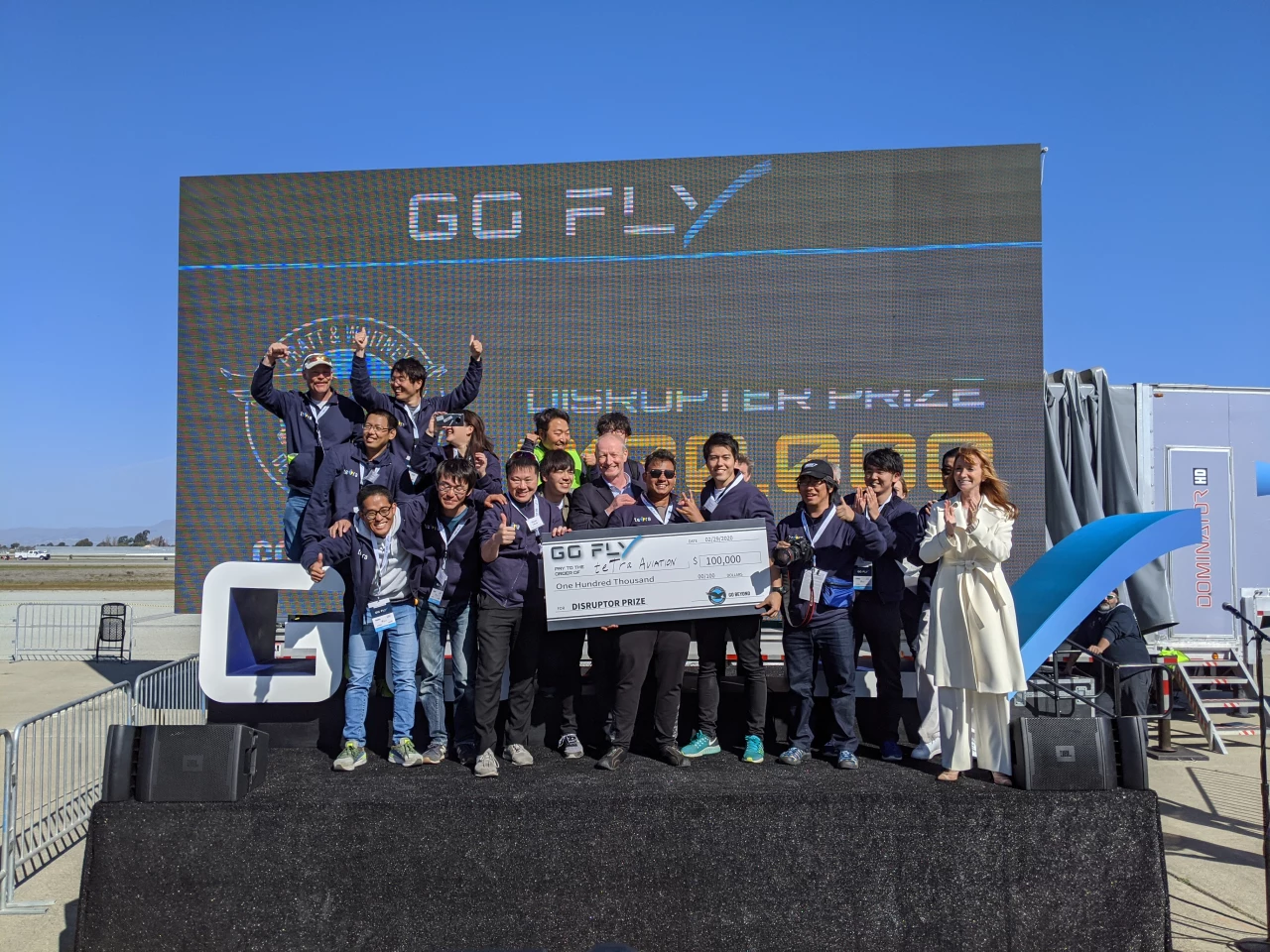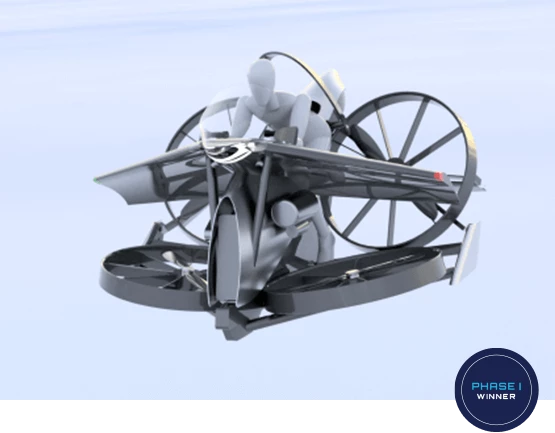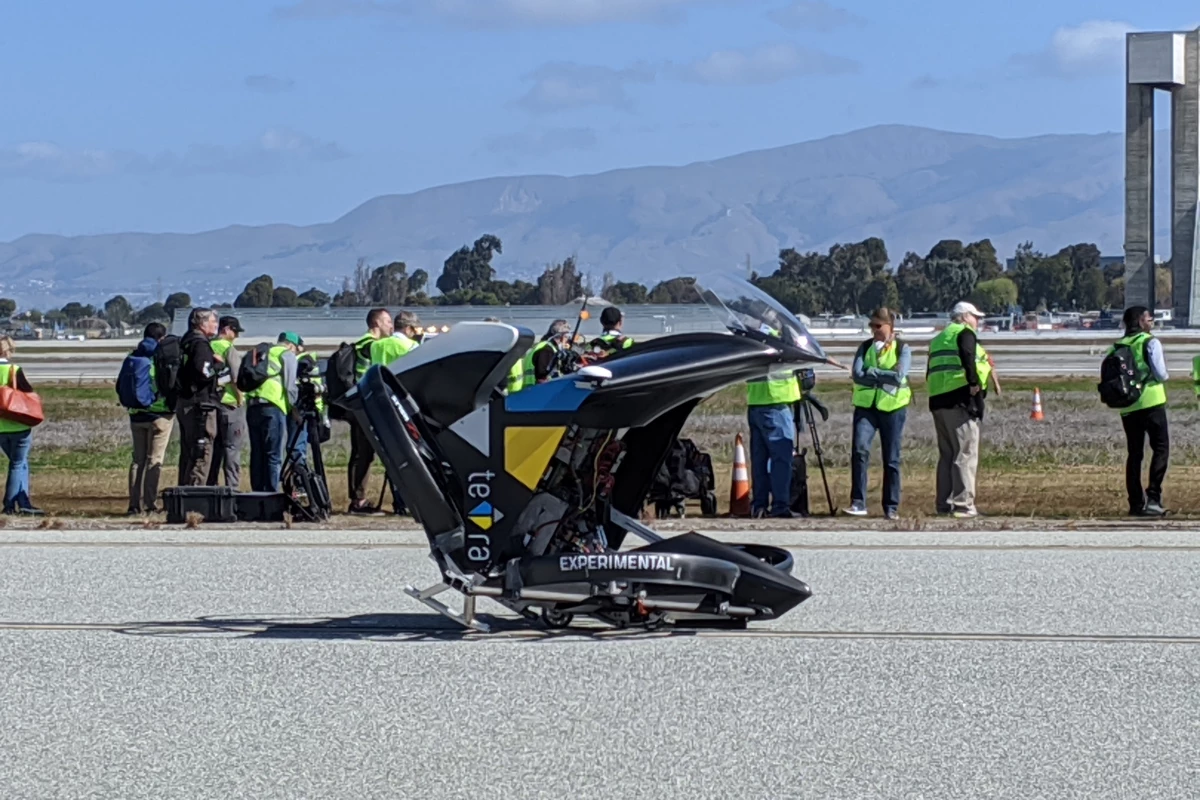The final fly-off in Boeing's US$2 million-dollar GoFly personal flight contest was postponed yesterday due to high winds, but one Japanese team still went home with a substantial check to put towards further research and development.
The 854 initial team entries from 103 countries were whittled down to just 24 for the hotly anticipated grand prize fly-off, in which each team was prepared to demonstrate its manned flying machines' performance, speed, endurance, quietness, compactness and VTOL capabilities, with extra marks awarded for a nebulous "experience of open air flight" criterion.
With quadcopter-inspired manned flight devices seemingly popping up all over the place, GoFly was designed to sort the wheat from the chaff, giving teams an internationally recognized contest to compete in, and serious prize money to vie for, as well as a high-profile event in which to test these next-gen aircraft.

Unfortunately, wind conditions over the weekend made it impossible for the fly-off to go ahead as planned, so the GoFly team has postponed the event, giving teams some extra time to improve their designs and work some bugs out. But one team didn't go home empty-handed; the Japanese teTra Aviation team took home the Pratt & Whitney Disruptor award and a check for US$100,000.
The team's teTra 3 is indeed a strange-looking device. Imagine, perhaps, a motorcycle-style seating arrangement placed on a folded-up quadcopter airframe. The two forward rotors point downward, while the two rear ones are steeply angled such that about 70-80 percent of their thrust pushes forward instead of downward. Tilted backwards, you could fly it almost like a regular quad, but it's built more for high-speed forward flight than for hovering, and it's got a small wing to contribute vertical lift as airspeed picks up.

"Innovation has always been at the core of our DNA at Pratt & Whitney and we applaud GoFly's efforts to transform the industry," confirmed Geoff Hunt, Senior Vice President of Engineering at Pratt & Whitney. "We're proud to sponsor such an exceptional competition and we designed the Disruptor Award to recognize the team that challenged the status quo, delivered unique thinking into a complex issue and considered safety, reliability, durability and system integration."
GoFly has not yet proposed a date for the re-run of the grand prize fly-off, so US$1.5 million is still up for grabs. US$1 million of that will go to the overall fly-off winner, with US$250,000 each going to the quietest and smallest aircraft that pass a series of flight tests with either a pilot or a weighted dummy on board.
The tests, which must be knocked off in a single flight, include vertical takeoff and landing inside a 30-foot diameter, 12-foot high virtual cylinder (9.1 x 3.7 m), as well as a speed run of six laps around a marked course, and a "touch & go" aborted landing simulation - as well as continuing to hover to demonstrate a flight endurance of more than 20 minutes. Contestants must then prove they've landed with enough fuel or battery left for an additional ten minutes of reserve flight. See the GoFly site for a full run-down of test criteria.
Source: GoFly






